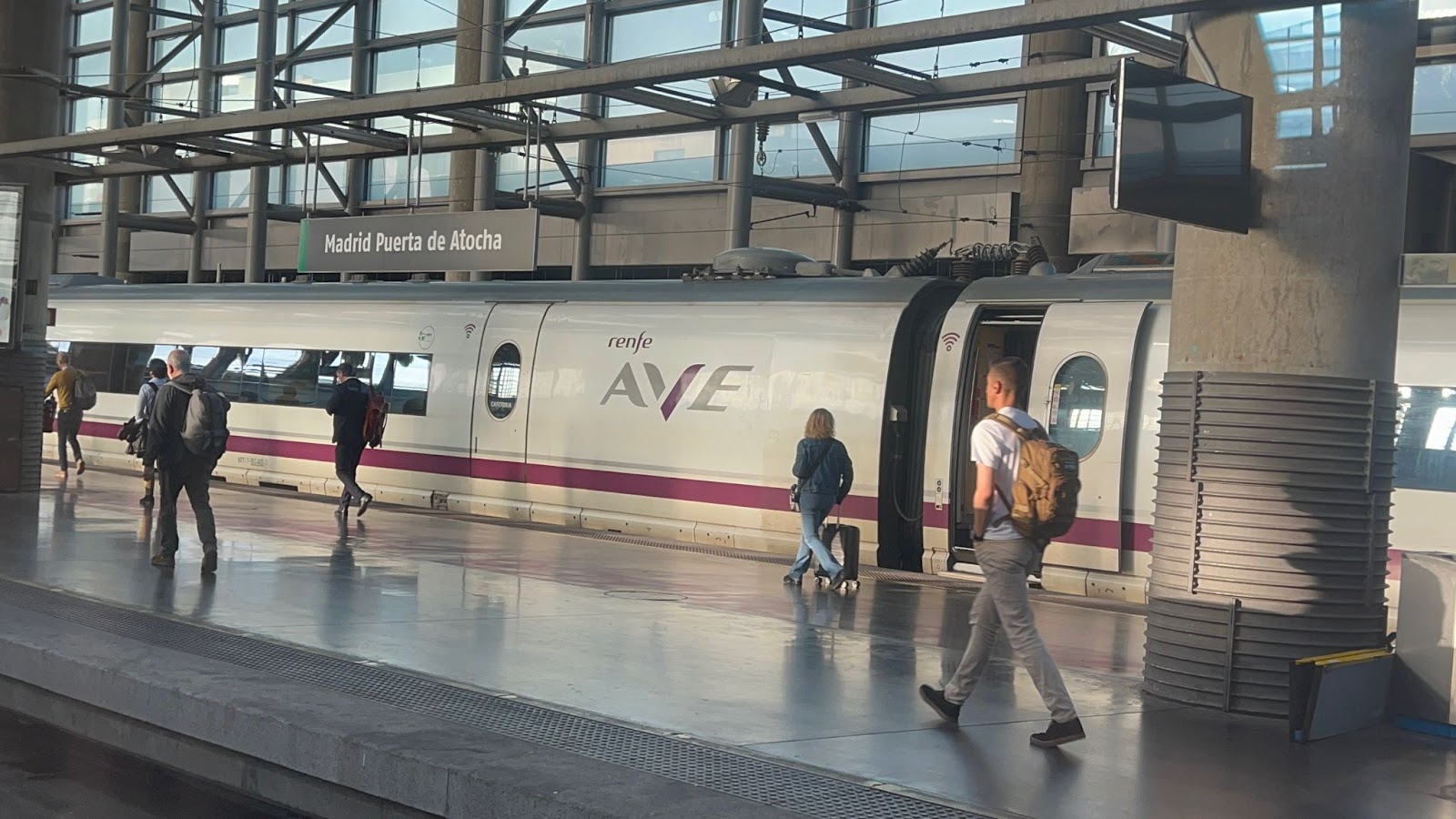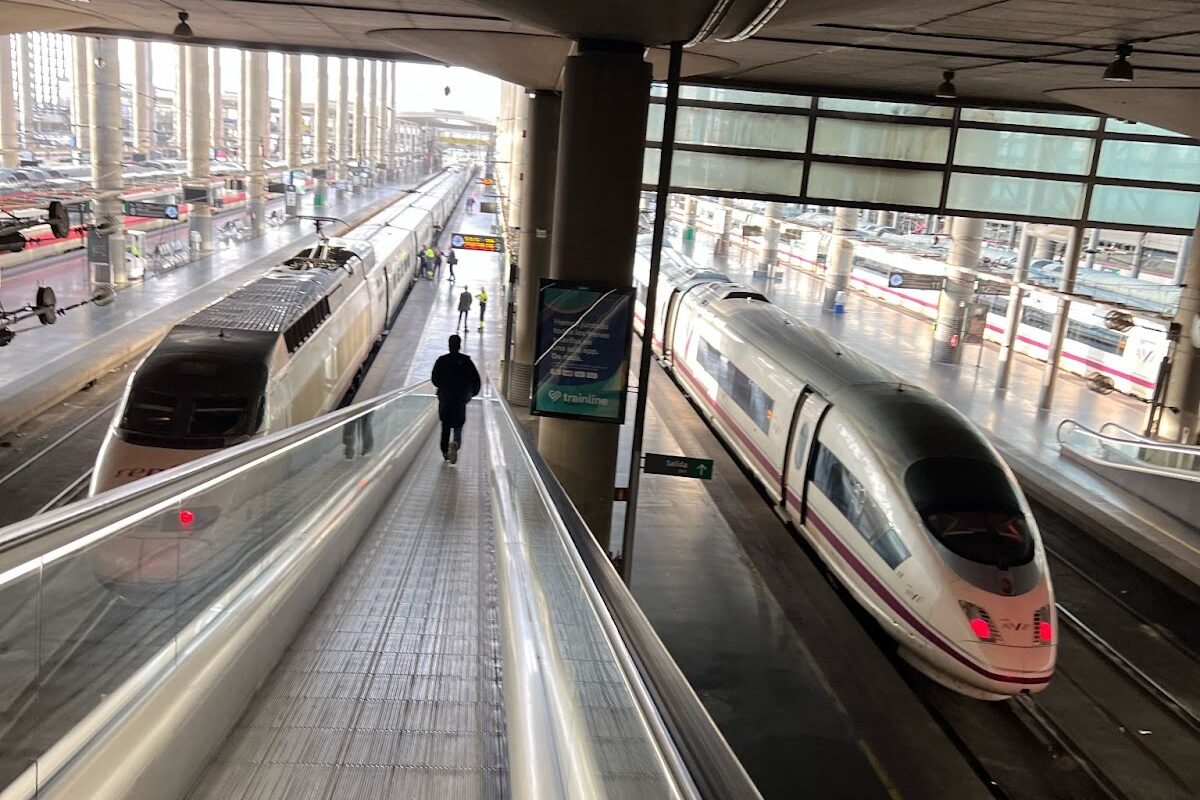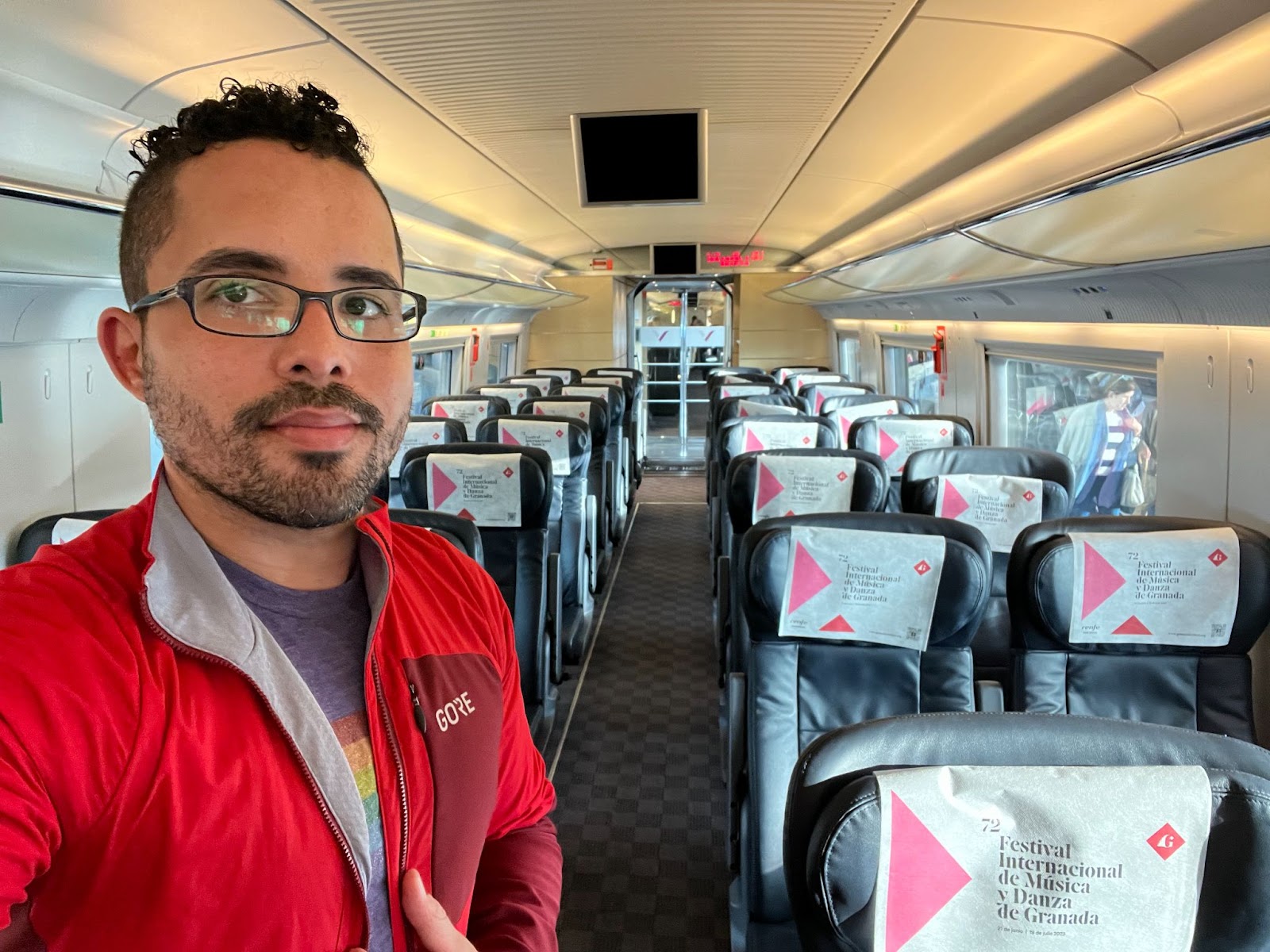Amtrak’s path to world-class service
US passenger rail was the envy of the world at the turn of the 20th century. As global temperatures rise, and with the growing need to enhance intercity mobility options to get to economic and civic opportunities, it’s high time to look to and emulate our international peers in developing passenger rail: iterate, innovate, and don’t fall for the immediacy trap.

Frequent, reliable, and attractive high speed intercity rail service in Madrid, ES. T4A photo by Benito Pérez.
What do you imagine when you think of passenger rail service in the United States? Slow service, long delays, and flash frozen high-sodium food? Amtrak passengers nationwide will recognize these hallmarks of the company’s poorly-regarded passenger rail service. Repair and operational issues, such as equipment failure, staff shortages, and the conditions of rail infrastructure, contribute to delays. The result is a frustrated traveling public more likely to get in their car than take even the most convenient of train rides, leading to more driving and more emissions.
But it doesn’t need to be this way. High speed rail operations in Asia (think Japan, China) or in Europe (think the TGV in France, AVE in Spain, and many other passenger rail operators), though imperfect, have made great strides where Amtrak still lags behind. Common across these systems is an enhanced state of repair, dedicated passenger rail lines, quality user experience on the trains, and traveling speeds that rival air travel and dwarf vehicle travel. These features are the result of constant iterative processes.
With strong government support, these systems are constantly improving and reinventing themselves to focus on the customer and move them in a safe and efficient manner. They are constantly exploring service expansions to new communities to enhance mobility choice beyond the car and plane, all while exploring technological advances and infrastructure improvements to continually speed up and improve their service.
This was my experience traveling in Spain several weeks ago, taking the train from Madrid to Málaga, an otherwise 6- to 7-hour car ride covered by AVE just north of 2 hours. When you factor in time waiting at the airport, this was even less time than a flight. Along the way, I had the opportunity to dine on board, getting a freshly made sandwich, while customers were able to explore other fresh food options available.
Why has Spain successfully developed high speed rail, while Amtrak’s quality of service continues to lag behind? Looking back on the Spanish history of their rail system, starting back in the 19th century, they reached their apex in the 1950s, with 19,000 km of rail lines serving passengers. The Spanish Civil War in the late 1930s did a number to the state of repair of the rail system, forcing the government to nationalize the system by 1941. But like the US, auto ownership started to take a toll on the Spanish rail system (RENFE) in the 1950s, leading to 8,000 km of rail line to be dismantled in the coming decades.
But unlike the U.S., which took the rise in car ownership as granted and let its rail system deteriorate, Spain empowered RENFE to explore heavy investments in higher speed and capacity passenger rail starting in the 1970s. That led to a systemwide increase of rail speed to 160 kmph (100 mph, compared to Amtrak’s typical 79 mph benchmark) by 1986, and the first high speed rail line opening in 1992, followed by many more lines that have come online and are still growing across the country.
Coming back stateside, I thought: why are we not emulating such a proactive iterative approach with our passenger rail system? At the dawn of railroad technology in the 1800s, the US was a world leader in passenger rail service, with frequent service along 31,000 miles of rail. But after World War II, rail companies abandoned huge segments of the rail system as the private sector turned its attention toward vehicles and aviation. Recognizing that passenger rail is a vital mobility option for many communities in the United States, Congress intervened in 1971 with the creation of Amtrak, intent on maintaining passenger rail service as an option in the United States.
Far from reversing the deterioration of national passenger rail service, the creation of Amtrak resulted in further funding cuts, which created a vicious cycle at Amtrak of poor policy and operational decisions focused solely on the bottom line versus customer experiences. As the federal government invested further into high-speed roadways for vehicles, support for passenger rail funds deteriorated, so much so that today, some members of Congress consider the mere existence of Amtrak as government waste. Detractors of passenger rail contend that millions of taxpayer dollars are pouring into passenger rail, yet are not achieving the same results as what we see with our peers abroad. Without needed funds, we see a deterioration of state of repair and safety, user experience, and eventually a loss of ridership that would help bring in needed funding.
Though the 2021 infrastructure law’s historic passenger rail funding and policy reorientation to the customer experience has the potential to interrupt that cycle, many members of Congress are intent on gutting it before those effects can take hold. The most extreme example is the House of Representatives’ 2024 Transportation Housing and Urban Development Appropriations bill, which recommended nearly 70 percent in funding cuts to Amtrak.
As threats to essential air service and rural mobility options abound, America can’t afford to also lose passenger rail service, which is a valuable transportation option for the 1 million rural residents that do not have access to a vehicle. And as transportation continues to contribute to U.S. climate emissions, every American needs better options for long-distance travel than hopping into a vehicle or onto a plane.
There needs to be a fundamental reset in our mindset when it comes to passenger rail. There is a culture of immediacy with results; an expectation that existing resources should be working harder, otherwise take more resources away. If we expect American passenger rail to be world class, like it was in the late 19th century, we need to be investing in a world class way, through constant and iterative funding and innovation, not throwing the towel and staying complacent with the status quo.






















